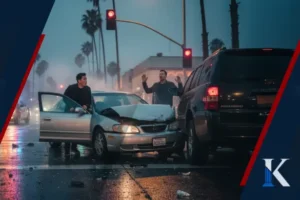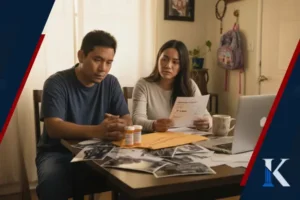
Understanding the Basics of California Personal Injury Law
Have you heard about personal injury law?
California personal injury law is a complex yet important part of the U.S. legal system. It’s all about getting justice when someone gets hurt because of someone else’s recklessness or negligence. In this blog, we’re going to discuss the basics of California personal injury law. We’ll also cover what personal injury means, the important points you need to know, how the legal process works, and more. So, let’s dive in!
What is Personal Injury in California?
In California, personal injury means any physical, emotional, or psychological harm inflicted on an individual as a result of another party’s negligence, intentional actions, or strict liability. This harm can manifest in various ways, including bodily injuries, emotional distress, property damage, or when someone passes away because of it. Personal injury cases can arise from a wide range of circumstances, such as:
- Motor vehicle accidents, including cars and trucks
- Motorcycle accidents
- Pedestrian accident
- Slip and fall incidents
- Defective products incidents
- Dog bite incidents
- Child injury incidents
- Medical malpractice
- Wrongful death
Key Elements of California Personal Injury Law
Personal injury claims are based on a simple idea: when someone injures you because they did something wrong, they should be legally responsible for it. In California, and in many other states, this responsibility is determined by showing that the person who caused the harm or an accident either did something negligent or on purpose, and that these actions directly led to your injuries. To prove this, there are three important things you need to show:
- Duty of Care: This means the person who caused the harm had a legal duty to act responsibly in a given situation. For example, drivers must follow traffic laws to keep everyone safe, and property owners should make sure their premises are safe for visitors.
- Breach of Duty: The accident victim must prove that the person responsible for their accident or injuries didn’t meet this duty. In other words, they did something that wasn’t up to the standard of care expected in that situation. For instance, if a driver runs a red light and causes a crash, they didn’t meet their duty of driving safely and obeying traffic signals.
- Causation: This means showing that the person’s failure to meet their duty directly caused your injuries. You have to prove that if they hadn’t done what they did, you wouldn’t have gotten injured.
Successfully establishing these elements is essential for a personal injury victim to prove that the defendant is legally responsible for the bodily harm and property losses incurred. Personal injury cases can vary widely in their specifics, but these core elements remain constant and must be carefully addressed to seek compensation and justice for the injured party.
Foundations of California Personal Injury Law
Negligence
This is a big part of personal injury law in California. To make a case, the person who got hurt (also known as the injured party) or in cases of personal injury law, the accident victim, needs to prove four things:
- Duty of Care: The person who caused the harm (often referred to as the defendant) had a duty to provide reasonable care and failed to do it.
- Breach of Duty: The defendant didn’t do their duty and acted carelessly.
- Causation: The injured party has to prove that the defendant being careless directly caused the injury.
- Damages: The accident victim got hurt, either physically, emotionally, or financially. It can also be under punitive damages, where the defendant’s act is proven to be intentional.
Comparative Negligence
California has a rule that says even if the person who is the victim of the accident is partly to blame for what happened, they can still get some money, also known as compensation. But the amount they get is reduced based on how much they’re at fault.
Strict Liability
Sometimes, in cases where a product is dangerous, you don’t have to prove someone was careless. You just have to show that the product’s design defects caused harm.
So, in a nutshell, personal injury law in California is about showing someone was careless and that it caused harm to you. But even if you were a bit at fault, you can still recover some compensation. And in some cases, like with dangerous products, you don’t even have to prove carelessness, only that the product caused harm.
The Legal Process and Claims
When pursuing legal action following an injury in California, it’s essential to understand the legal process.Alamin natin kung anu-ano ang mga key components nito:
Damages and Compensation
Personal injury damages can be put into 2 categories: economic and non-economic damages. The amount of money you will receive depends on various factors, including the severity of injuries, medical expenses, and the impact on the injured person’s life.
- Economic damages: Medical bills, lost wages, property damage, and other measurable losses.
- Non-economic damages: Pain and suffering, emotional distress, loss of consortium, loss of enjoyment, and a diminished quality of life.
Statute of Limitations
California has a statute of limitations or a time limit for filing a personal injury lawsuit. Generally, the deadline is two years from the date of the injury. However, exceptions and extensions may apply in specific cases , such as when the injury is not immediately discovered.
Evidences To Help Prove Liability
May ebidensya ka ba? In finding justice in personal injury cases, strong evidence is a must to establish liability. Gathering and presenting the right evidence can significantly strengthen your claim and help you recover more compensation. Here are some common types of evidence that can help prove liability:
- Eyewitness Testimony: Statements from witnesses who saw the accident can provide a valuable first hand story of what happened. Their testimony can help verify your version of events and prove the at-fault party’s negligence or intentional actions.
- Photographs and Videos: Photographs and videos can be extremely convincing. These can show the scene of the accident, the extent of damages, hazardous conditions, or any visible signs of negligence.
- Police Reports: Official police reports filed at the scene of an accident can document important details of the accident. These reports can serve as valuable pieces of evidence, especially in court for lawsuits.
- Medical Records: Detailed medical records describing your injuries, treatments, and prognosis are important. They provide a clear link between the defendant’s actions and the harm you suffered, demonstrating the need for compensation.
- Expert Testimony: Experts in relevant fields, such as accident reconstruction specialists or medical professionals, can provide expert testimony. Their insights can help clarify complex aspects of the case and establish liability.
- Documentation and Correspondence: Any written communication, such as emails, letters, or text messages, that may reveal the defendant’s negligence or admissions of fault can be valuable evidence.
- Surveillance Footage: In some cases, surveillance footage from cameras in the vicinity of the incident can provide objective evidence of what occurred, supporting your claims.
- Maintenance and Inspection Records: For cases involving premises liability or defective products, maintenance and inspection records can demonstrate negligence or lack of due diligence on the part of property owners or manufacturers.
- Expert Reports: Reports generated by experts after a thorough investigation can provide a comprehensive assessment of the incident. These reports can carry substantial weight in court.
- Relevant Documents: Any documents related to the incident, such as accident reports, repair estimates, or insurance correspondence, should be preserved and presented as evidence.
- Statements and Depositions: Statements made by the defendant or other parties involved in the case can be crucial. Depositions, recorded under oath, can be particularly impactful during legal proceedings.
FAQs About California Personal Injury Law
What is the statute of limitations for filing a personal injury claim in California?
In California, the statute of limitations or time limit to file for a claim is two years from the date of the injury or accident. However, exceptions may apply, especially when injuries are not immediately apparent. Speaking with an attorney to know the specific time frame for your case will make sure that you do not miss the deadline.
What types of damages can I recover in a personal injury case in California?
In a California personal injury case, you can potentially recover both economic and non-economic damages. Economic damages cover quantifiable losses such as medical costs, lost wages, and property damage. Non-economic damages encompass intangible losses like pain and suffering, emotional distress, and a diminished quality of life.
Do I need to prove negligence to win a personal injury case in California?
Yes, negligence is a fundamental element in most injury cases in California. To succeed in your claim, you need to show and prove that the responsible party owed you a duty of care, breached that duty, and that their breach of duty directly caused your injuries.
What is comparative negligence, and how does it affect my case?
California follows a comparative negligence system. This means that even if you share some responsibility for the accident, you can still recover damages. But they’ll reduce how much you get based on how much you were at fault. A smart move to do is to consult with a personal injury attorney to assess how comparative negligence may impact your case.
Should I consult with a personal injury law firm or my case?
Consulting with a personal injury attorney is often advisable. Experienced personal injury attorneys can provide valuable legal guidance, evaluate the strength of your case, negotiate with insurance companies, and represent your interests in court for a personal injury lawsuit, if necessary. Their expertise can increase your chances of achieving a favorable outcome and fair compensation.
Don’t fight for your rights alone. May tutulong sa’yo.
California personal injury law might sound complex, but it’s crucial for protecting the rights of those who got hurt because of someone else’s negligence.
If you’re in a situation where you need to file a personal injury claim or lawsuit, getting advice from an experienced personal injury lawyer is a smart move. They know the ins and outs, can help you understand your rights, figure out if your case is strong, and fight for the compensation you deserve.
And if you’re part of the lively Filipino community here in California, finding a lawyer who speaks your language and understands your culture can make a big difference. They can communicate clearly, be sensitive to your background, and build trust throughout your legal journey.
When tough times hit, being informed about California personal injury law empowers you to protect yourself and seek a fair resolution. Whether it’s a car accident or a slip and fall, remember that your rights and well-being matter. Don’t hesitate to reach out for help and tap into the resources available in your community to ensure justice is served.




